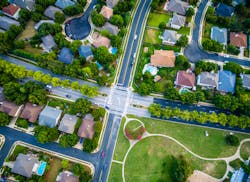Your neighborhood may increase risk of hospitalization from respiratory diseases like COVID-19
The range of COVID-19 symptoms varies—some feel a mild cold, others are hospitalized, while others perish. Many studies have linked the severity of COVID-19 symptoms with an individual’s biological factors, but less is known about the impact of non-biological factors, such as the environment in which people live.
A new study that published on June 14, 2023, in the journal PLoS ONE, is one of the first to show that the neighborhood-built environment might pose an independent risk determining the individuals hospitalized due to COVID-19 illness.
The authors found that in a cohort of more than 18,000 individuals with SARS-CoV-2 infections, living in multi-family building, living in a neighborhood with higher air pollution (PM2.5) levels and living in a neighborhood with lower walkability and bike-ability were associated with a greater incidence rate of hospitalization, even when controlling for socioeconomic vulnerability and individual-level demographic and medical characteristics. Neighborhoods with higher public transit quality and access were also associated with a higher incidence rate of hospitalization.
The study identified differences between the two largest ethnic groups in the region. Higher PM2.5 levels posed a higher rate of hospitalization for Latinx individuals, and density and overcrowding showed stronger associations for non-Hispanic White individuals.

